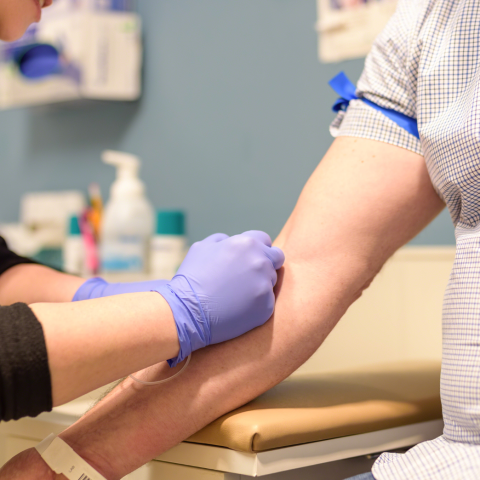
Understanding Cholesterol
Cholesterol plays a key role in your body, but high levels can contribute to vascular disease by building up in the arteries and restricting blood flow. Your body naturally produces cholesterol, but it also comes from foods high in animal fats, such as eggs, cheese, and meat. Managing cholesterol levels through a balanced diet and healthy lifestyle choices can help protect your blood vessels and overall heart health.
Types of Cholesterol
Not all cholesterol is created equal. It comes in two very different types:
- Good cholesterol (high-density lipoprotein or HDL) helps keep arteries from becoming blocked.
- Bad cholesterol (low-density lipoprotein or LDL) can build up and cause blockages in the arteries.
Triglycerides
Triglycerides are fats produced by the liver, and they can cause similar health problems as LDL.
The Impact of Cholesterol on Vascular Health
Over time, a buildup of extra cholesterol, or plaque, can narrow the insides of blood vessels. Eventually, this plaque leads to a process called atherosclerosis. This condition can result in blood vessel disease, increasing the risk of strokes, heart attacks, aneurysms, and other life-threatening problems.
Know Your Numbers
When doctors advise you to “know your numbers,” one of those numbers is your cholesterol level. For good vascular health:
- Total cholesterol should be less than 200.
- Good cholesterol (HDL) should be more than 60.
- Bad cholesterol (LDL) should be less than 130.
- Triglycerides should be less than 150.
Can Lifestyle Changes Impact Cholesterol Levels?
Yes. Even slight lifestyle changes can significantly impact vascular health. For example, a 10-pound weight loss can result in a 5 to 8 percent reduction in LDL. If lifestyle changes are insufficient to bring your numbers to a healthy level, medication may be necessary. Total cholesterol levels that are borderline high (between 150-199 mg/dL) or high (200 mg/dL or more) may require treatment with a statin drug. In addition to lowering cholesterol numbers, statins and similar drugs also alter the characteristics of plaque, making them less likely to cause problems. Statins offer benefits beyond merely lowering cholesterol, and some conditions necessitate continued statin use, even after achieving favorable cholesterol levels.
What Are Statins?
Statins serve as a key control point in the metabolism of serum cholesterol. Specifically, when “bad” (LDL) cholesterol is high, the risk of heart attack and stroke also rises.
Why Take Statins for Cholesterol Control?
All types of atherosclerosis improve when patients take statins. Side effects are relatively rare, and if a patient does not tolerate one statin, there are many different options available.
Who Benefits from Taking Statins?
- People at risk of heart attack and stroke due to high cholesterol
- Patients with atherosclerosis or plaque in their blood vessels
- Vascular surgery patients, who experience fewer complications during procedures
Do Statins Affect Plaque in the Blood Vessels?
Recent research suggests that statins don’t just stop plaque from worsening; they may also reduce plaque in the leg arteries. Studies indicate that statins help keep plaque stable, reducing the likelihood of it breaking off and forming blood clots that can lead to heart attacks and strokes. Additionally, statins improve the function of cells within the artery.
Don’t Statins Have Side Effects?
Few statin side effects have been recorded since their introduction 40 years ago. Most mild side effects, such as muscle pain and cramps, can often be avoided by switching statins. While serious side effects are rare, it’s important to be aware of them. They include:
- Liver damage: This very rare condition does not produce symptoms, so laboratory tests are ordered when patients first start taking statins.
- Muscle injury: In rare cases, inflammation of the muscles can occur. In severe instances, this rapid muscle destruction can lead to kidney failure.
